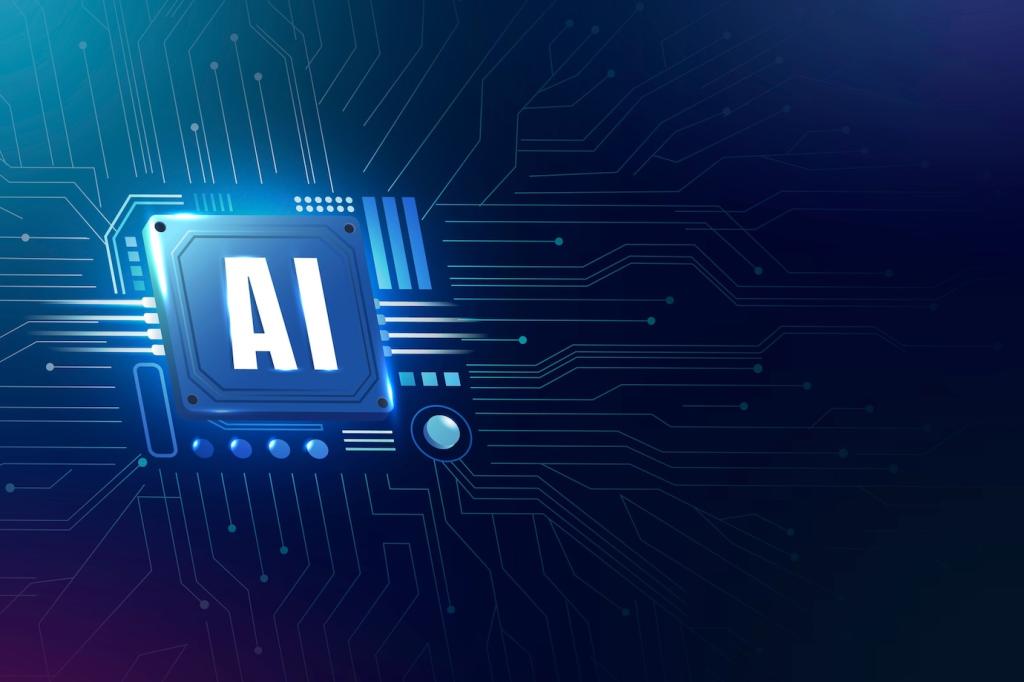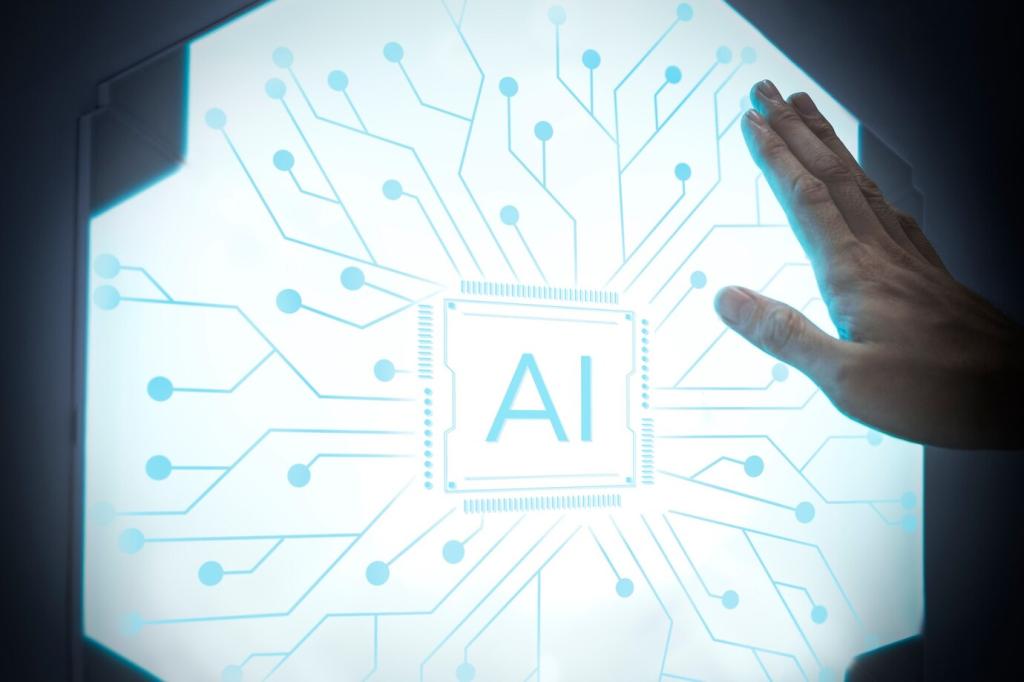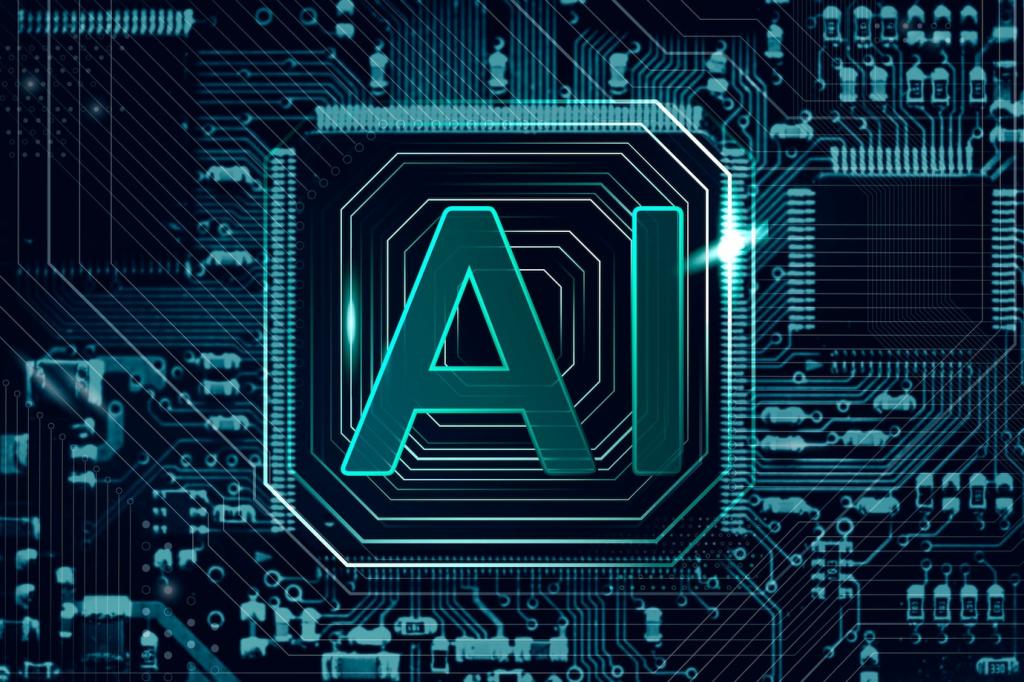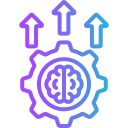Artificial Intelligence (AI) has emerged as a transformative force in the renewable energy sector, driving notable advancements in how sustainable power is generated, managed, and consumed. Through sophisticated algorithms and data-driven insights, AI is addressing long-standing challenges such as variability, grid stability, and resource efficiency. These innovations are enabling utilities and organizations to unlock new levels of performance and reliability, marking a significant leap towards a more sustainable energy future. In this exploration of AI-driven breakthroughs, we delve into the cutting-edge techniques and applications that are shaping the optimization of renewable energy systems worldwide.
Early Fault Detection for Wind Turbines
Early fault detection is a critical component for maintaining the performance and longevity of wind turbines. AI algorithms analyze vibration patterns, temperature fluctuations, and other operational metrics to spot subtle anomalies that might indicate developing faults. With continuous monitoring and instant feedback, operators can deploy maintenance crews precisely when and where they are needed, preventing catastrophic breakdowns. Such preemptive strategies minimize revenue losses due to unscheduled outages and reduce the risk of secondary damage to other components, ensuring a more robust energy supply.
Solar Panel Performance Optimization
AI-driven predictive maintenance for solar farms involves continuous assessment of each panel’s performance, taking into account factors like light intensity, temperature, and historical output. The system isolates underperforming panels, identifies probable causes such as soiling or microcracks, and recommends targeted interventions. These insights derived from AI not only increase total energy yield but also streamline labor by enabling maintenance teams to focus on the most impactful tasks. The result is a smarter, more agile approach to maximizing solar farm profitability and ecological benefits.
Integrating Remote Sensing for Hydroelectric Plants
Hydroelectric facilities benefit from AI-integrated remote sensing, which processes large volumes of data from sensors and environmental monitoring devices. By identifying trends such as irregular water flow patterns or equipment wear, the system schedules maintenance before issues escalate into failures. This application reduces human intervention, lowers inspection costs, and enhances the accuracy of fault prediction. The combination of sensors and AI ensures uninterrupted plant operation, safeguarding both infrastructure and energy output integrity.
Demand Forecasting and Consumption Management
Machine learning models have made substantial strides in predicting energy loads with high precision. By analyzing multidimensional data—including seasonal trends, population growth, and social events—these models detect patterns and anticipate spikes or drops in demand. Utilities use these insights to optimally dispatch renewable resources, plan maintenance windows, and mitigate risks associated with mismatched supply and demand. Over time, this approach leads to a more resilient and responsive energy system, lowering costs and improving consumer satisfaction.


Weather Forecasting for Renewable Output Maximization

Next-Generation Wind Power Prediction
The efficiency of wind farms relies heavily on the ability to predict wind speed and direction. Leveraging deep learning and neural networks, AI models process vast datasets capturing atmospheric pressure, temperature gradients, and historical wind conditions. These insights translate into accurate, site-specific wind forecasts, allowing operators to schedule turbine operation and maintenance more intelligently. The result is higher turbine availability and reduced wear, rendering wind energy more competitive and dependable.

Solar Irradiance and Weather Modeling
Solar energy output is closely tied to changes in irradiance levels and cloud cover. AI-driven models blend real-time satellite imagery with local weather station data to deliver highly granular solar forecasts. This foresight enables operators to proactively adjust asset operation and grid contributions, mitigating the effects of intermittency. By anticipating dips or spikes in daytime solar generation, utilities achieve a smoother energy profile and extract more value from photovoltaic assets in all weather scenarios.

Real-Time Hydrological Forecasting
AI’s capability to process complex hydrological and meteorological datasets brings sharper accuracy to hydroelectric output predictions. By modeling upstream rainfall, snowmelt, and river flows, intelligent systems can optimize reservoir management and turbine scheduling. This proactive planning ensures maximum generation during peak periods and enhanced resilience during droughts or floods. Enhanced hydrological forecasting not only secures hydroelectric profits but also supports the integration of water-dependent renewables into the broader power system.
Smart Energy Storage Optimization
AI-Controlled Battery Dispatch
Sophisticated AI algorithms determine the optimal moments to charge or release energy from large-scale batteries based on real-time grid demands, electricity prices, and renewable generation forecasts. This fine-tuned control prevents both overloading and unnecessary wear on storage systems, extending battery lifespan. By maximizing revenue from time-based energy markets and ensuring dispatch during peak demand, AI-controlled battery management substantially improves the economics and reliability of renewable energy projects.
Predictive Battery Health Monitoring
Continuous assessment of battery health is essential for maintaining storage availability and performance. AI-driven predictive models interpret data from temperature sensors, charging cycles, and operational patterns to forecast potential degradation or failure points. Maintenance can be scheduled just in time, reducing costly outages and preserving battery capacity. This data-centric maintenance framework ensures that storage remains a dependable component of the renewable energy mix, capable of responding to unpredictable shifts in generation and demand.
Intelligent Coordination with Distributed Storage
In grids featuring myriad small-scale storage assets—from home batteries to community-level systems—AI acts as a central intelligence that harmonizes charging and discharging behaviors across the network. By dynamically aligning distributed storage activity with grid requirements, the system avoids congestion, prevents energy waste, and increases the overall utilization of renewable sources. This approach transforms distributed storage into a flexible, grid-supportive tool, accelerating the transition away from centralized fossil fuel generation.


Self-Optimizing Wind Farm Control
Wind farms equipped with autonomous control systems powered by AI continually adjust turbine positioning, blade pitch, and operational parameters to capture the most energy from fluctuating winds. These self-optimizing systems factor in real-time meteorological data and turbine interactions, maximizing aggregate output while reducing mechanical stress. Human oversight becomes more strategic, as operators focus on high-level oversight rather than granular operational decisions, unleashing new efficiency levels in wind energy production.

Automated Solar Tracking Systems
AI-driven automation enables solar arrays to continually reposition and tilt to track the sun’s movements with exceptional precision. These automated trackers analyze incoming irradiance and environmental data to optimize every panel’s orientation throughout the day. The result is a significant boost in energy capture relative to static arrays, especially in locations with high solar variability. With lower maintenance needs and higher yields, automated solar tracking systems redefine the operational landscape for photovoltaic installations.

Integrated Autonomous Microgrids
Autonomous microgrids, orchestrated by AI, seamlessly manage the generation, storage, and consumption of renewable energy for communities or facilities. These intelligent systems balance internal demands with external grid interactions, adapt to changing weather, and reroute power during outages with little or no human input. Autonomous microgrids increase local energy security, encourage greater use of renewables, and serve as models for future, fully decentralized power systems powered by AI.
Enhancing Energy Market Participation
AI-powered bidding systems analyze fluctuating market conditions in real time to submit highly competitive offers for renewable energy. These dynamic algorithms adjust pricing and dispatch strategies to capitalize on periods of high demand or price spikes, while avoiding uneconomical operation during oversupply. By improving profitability and market responsiveness, dynamic market bidding users gain a strategic edge, driving broader participation of renewables in both spot and long-term energy markets.
Renewable energy sources are increasingly called upon to provide ancillary services such as frequency regulation, voltage support, and spinning reserve. AI-driven automation enables rapid qualification, bidding, and performance in these services, optimizing both technical and economic outcomes. This elevation of renewables from passive supplies to active grid participants broadens their market footprint. It also supports the grid’s transition toward reliance on intermittent generation, reinforcing system stability and reliability.
Anticipating electricity price trends is crucial for maximizing the value of renewable generation. AI-driven forecasting tools synthesize market signals, weather forecasts, and real-time generation data to predict short- and long-term price fluctuations. Plant operators and aggregators leverage these insights to time energy delivery and storage discharge for maximum revenue. Enhanced forecasting accuracy translates to improved financial performance, supporting further investment and innovation in renewable infrastructure.


Organizations are turning to AI for precise, real-time calculation of their carbon footprint across building portfolios and supply chains. By integrating energy use, travel, procurement, and production data, AI models highlight areas of excess emissions and suggest targeted interventions. This granular visibility empowers sustainability officers to meet regulatory targets and make informed decisions, significantly advancing decarbonization efforts. Clear, data-driven reporting also enhances corporate reputation among environmentally conscious investors and consumers.

AI is instrumental in selecting optimal locations for renewable energy projects, instantly processing geospatial, meteorological, and socio-economic data. These analyses identify sites with the highest potential for solar irradiation, wind consistency, or water flow, while also considering grid connectivity and environmental impact. By ensuring maximum output and minimized land or habitat disruption, AI-supported siting decisions serve both economic and ecological goals, accelerating the rollout of clean energy infrastructure.

The lifecycle management of renewable assets is increasingly shaped by AI-driven circular economy approaches. Intelligent tools monitor material flows, predict end-of-life scenarios for components, and recommend recycling or repurposing pathways that minimize environmental footprint. These capabilities ensure that renewable energy growth does not come at the expense of new waste streams, bolstering the sector’s sustainability credentials. By championing resource efficiency through AI, the industry moves closer to true environmental stewardship.
Join our mailing list
